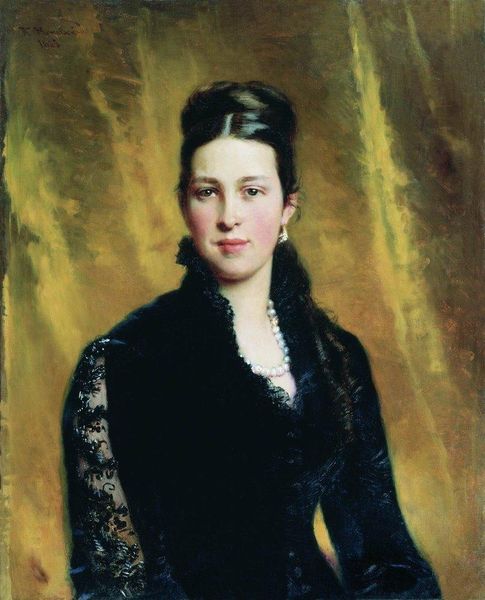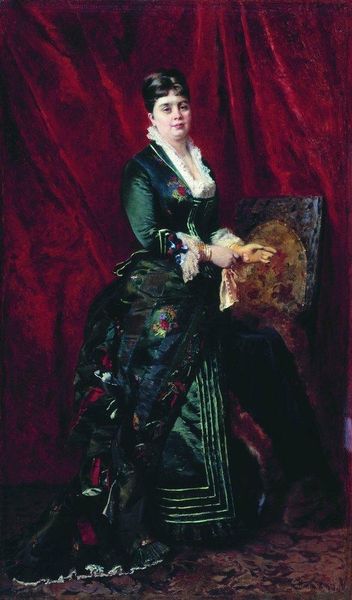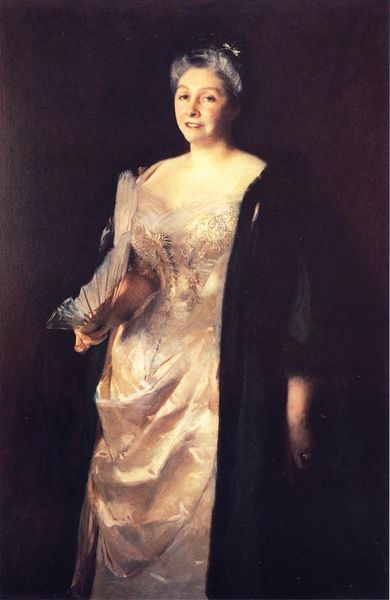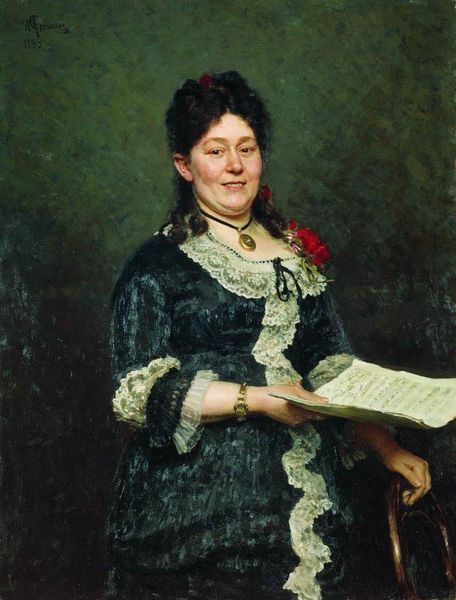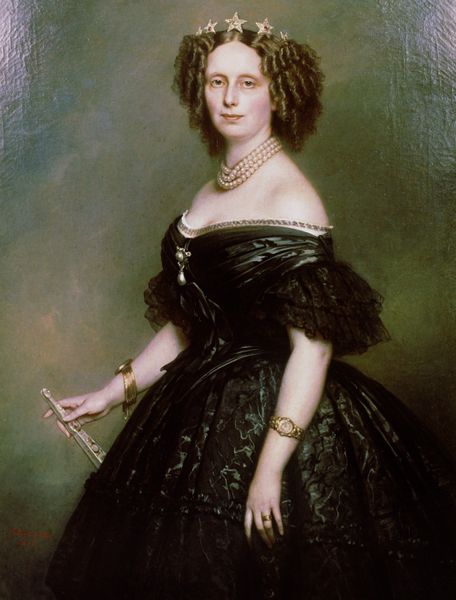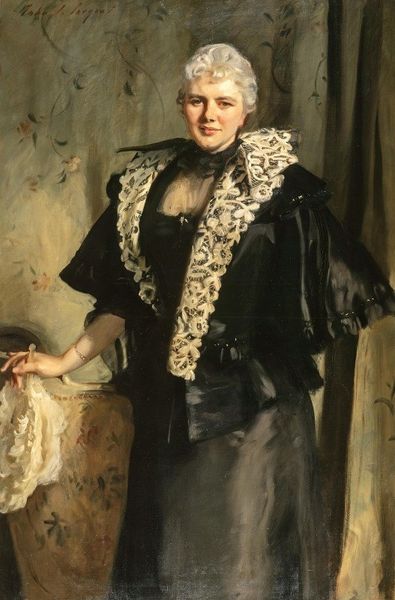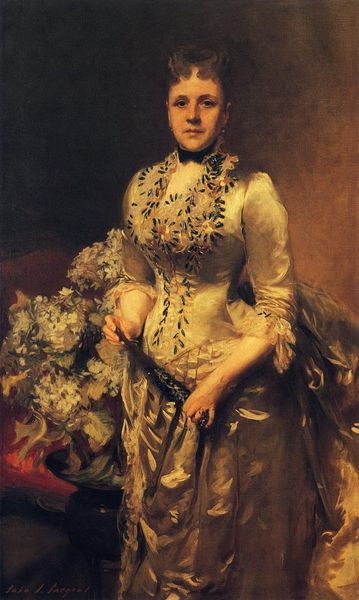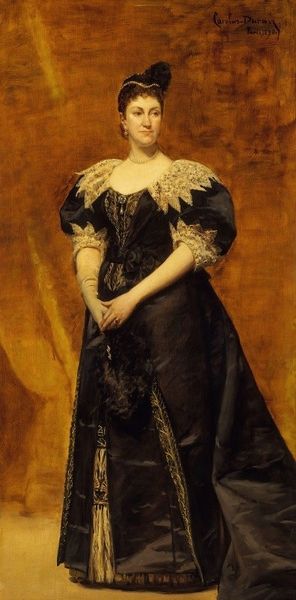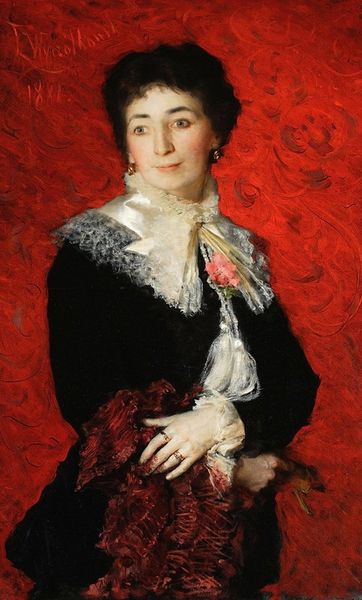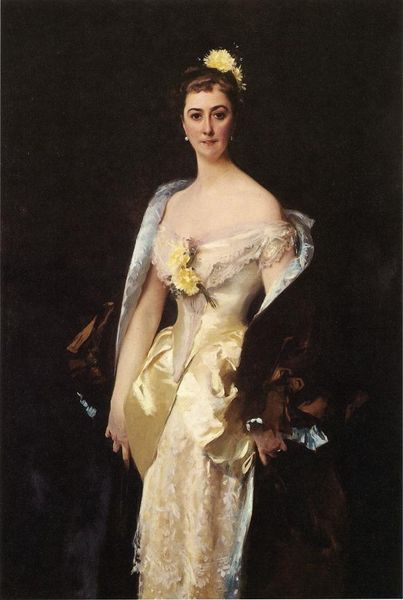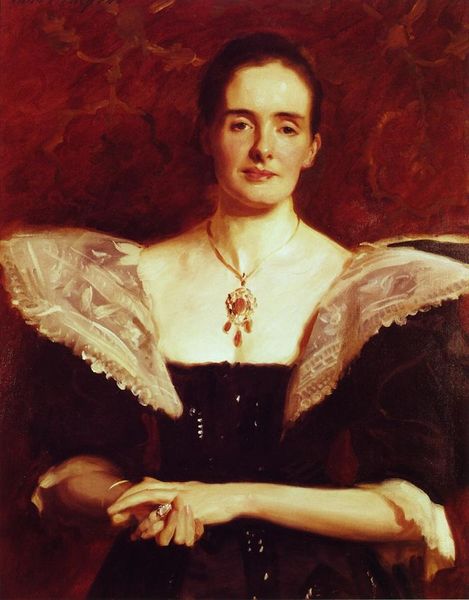
Copyright: Public domain
Curator: Welcome! Here we see "Portrait of Princess M.Orlova-Davydova," an 1880 oil on canvas by Konstantin Egorovich Makovsky. Editor: The sheer opulence of it strikes me first. The rich, dark colors contrasted with the shimmer of pearls and lace... it feels both grand and somehow restrained. Curator: Absolutely. Makovsky was known for his idealized portrayals of Russian aristocracy. The Princess, wrapped in furs and adorned with jewelry, embodies wealth and status. Editor: I can't help but consider the socio-political context. Russia at this time was a land of vast inequality. How does this painting reflect or perhaps deflect from those tensions? It feels like propaganda for the ruling class. Curator: That’s a critical point. While Makovsky presented a glamorous facade, other artists of the time were exploring the realities of peasant life and social unrest. His portraits served a specific function within the Imperial court. They project stability and power. Editor: But there’s a human element too, isn’t there? Look at her hands, clasped so tightly. Her expression is almost melancholic. It complicates the narrative of pure power. Is she burdened by her privilege? Curator: Interesting observation. The pose is formal, but there's a certain vulnerability in her gaze. It does invite a more nuanced interpretation, away from mere idealization. Makovsky was a skilled painter; he wouldn’t miss an opportunity to add depth, or drama. Editor: What about the fur? It practically drips off her shoulders; does it serve as both an emblem of power but perhaps also protection? Another layer, a shield of privilege against the world outside the palace. Curator: The use of luxurious materials certainly signifies rank, yes. We could even connect it to the exploitation of resources, the vast reach of empire… Art speaks beyond the surface. Editor: It's a portrait that makes you think, isn't it? About beauty, power, inequality, and the human condition, all rolled into one elegant package. Curator: Indeed. It showcases how art operates within complex systems of representation and continues to provoke necessary discussions even today.
Comments
No comments
Be the first to comment and join the conversation on the ultimate creative platform.
